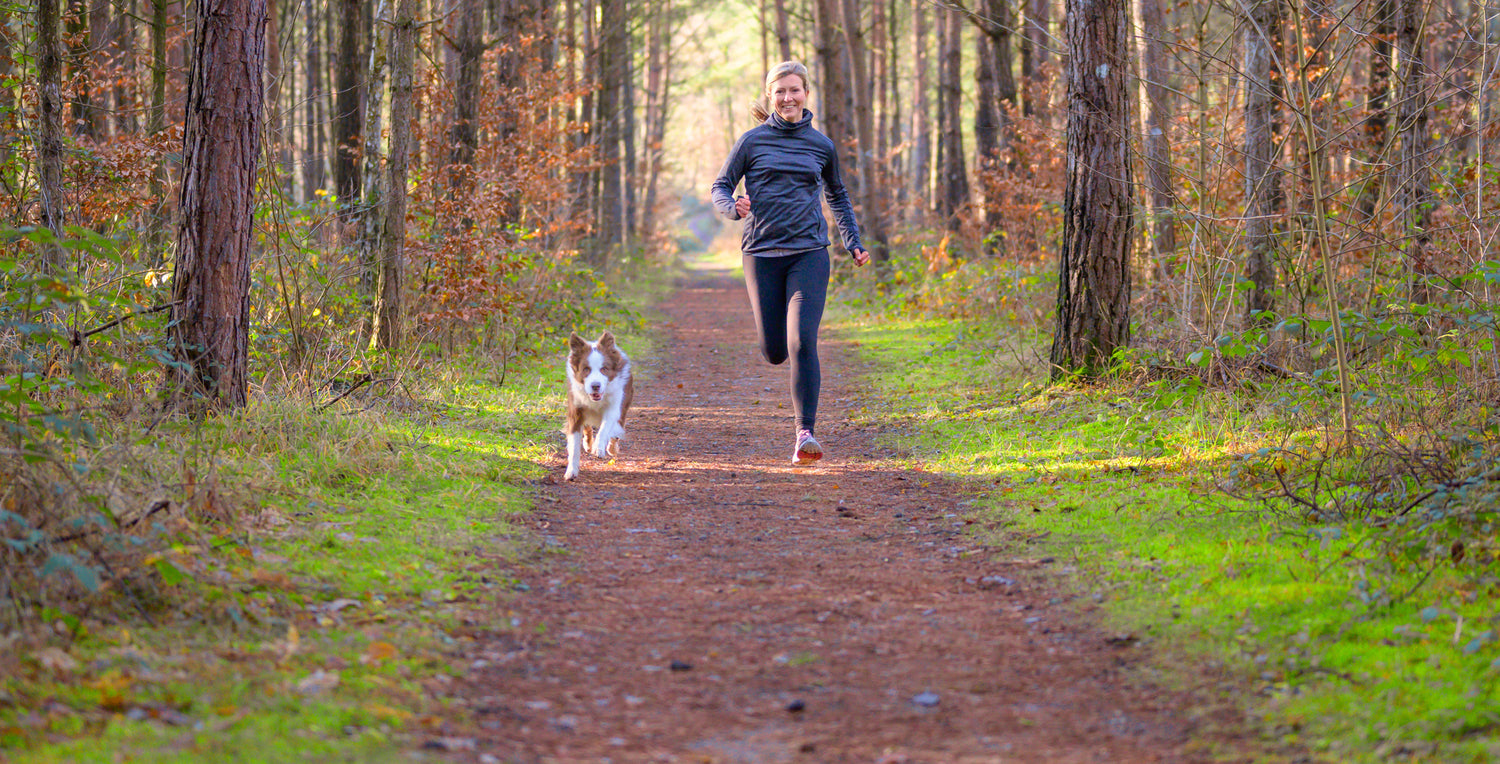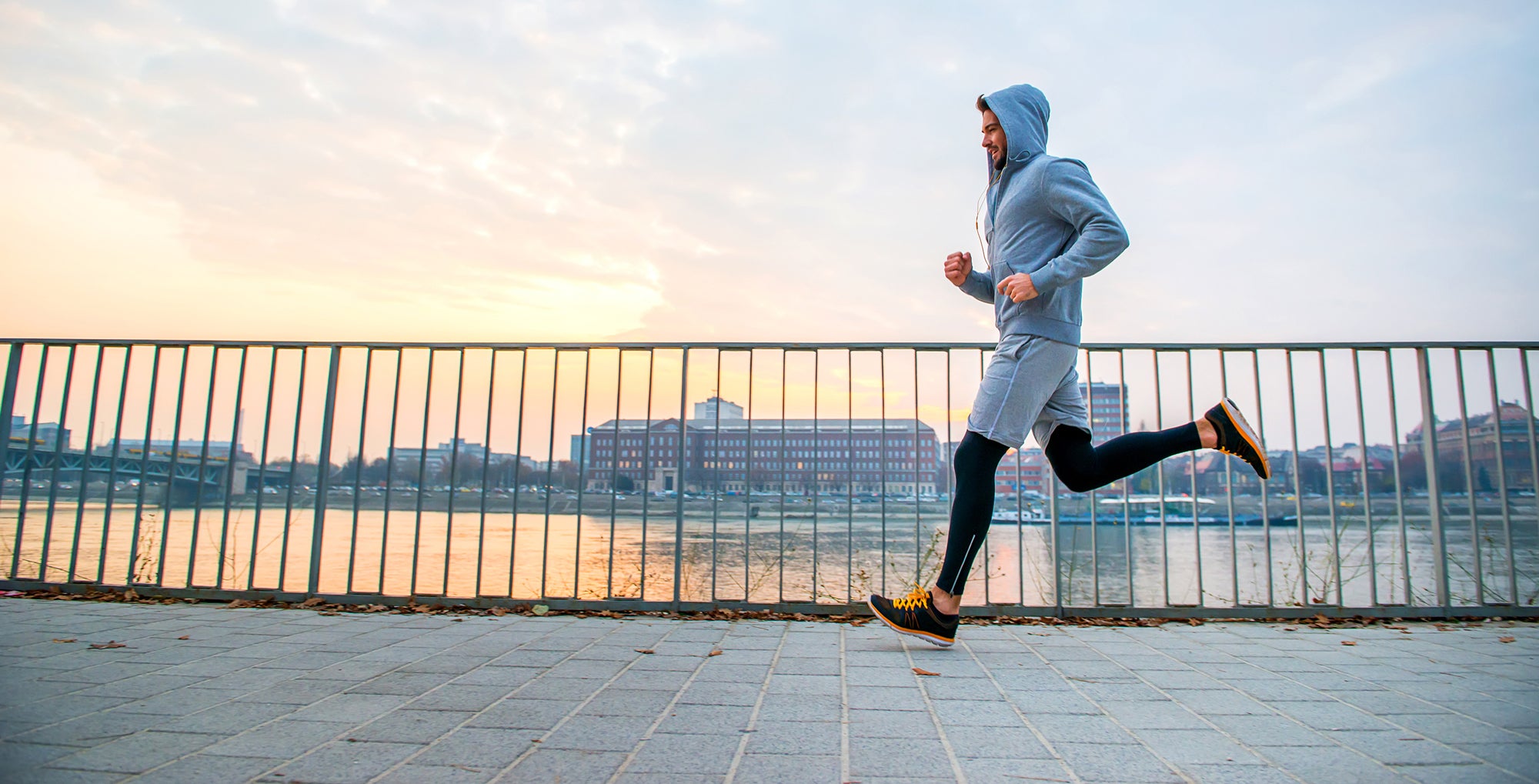We often think of arthritis as a condition that can limit us. But it doesn’t have to be this way - there are many ways that you can keep yourself moving, exercising and stay active, which can help you to continue to live the lifestyle that you want.
The good news is that there are plenty of ways to carry on with arthritis, and that doing so can even help with the condition. Whether you suffer from osteoarthritis, rheumatoid arthritis, or one of the many other forms of arthritic pain, consider the following ways of staying active and keeping healthy.
The benefits of exercise and activity for arthritis
You probably don’t need us to repeat all the usual things about why exercise is important - you know: good for the heart and lungs, losing weight, etc., all that stuff. If you’re one of the 10 million people in the UK, or of the many millions more worldwide, who suffers from arthritis, then you’ve probably also already heard that exercise is good for the condition.
It can reduce inflammation, strengthen bones, improve joint mobility, relieve stiffness and even provide pain relief. You should also know that exercise won’t harm the joints either, so long as done properly.
Easier said than done, though, as that doesn’t override the fact that it is often painful to exercise with arthritis at first (but this can get better overtime!).
That’s why it can help to think of the benefits that being able to be more active will provide. You might want to more easily move around the house or at work, to do more with your family or to continue doing the things you love.
These things don’t have to be the end goal alone though, why not try involving your family and friends in these activities? They don’t have to be done solo so use the time to not only take care of yourself but spend time with people you care about!
Warming up

What you choose to do, or what is going to be best for you, will vary depending on your current activity level and how severe your arthritis is. If it’s been a while, don’t be afraid to take things slowly and build up.
Before you start any activity, especially exercise when you have arthritis, it’s good to prepare a bit to reduce the risk of injuries. Some gentle stretching and movement is a great way to begin, and ideally you should incorporate some of the motions that you’re going to be doing during your activity.
Once you’re feeling limber-ish, possibly a bit out of breath, but definitely warmer, it’s time to get started.
“But what exercise is suitable for my arthritis?” we hear you thinking. Here are 12 suggestions, including some you may not have thought of.
Continue with your everyday activities
Good news! There are many things that you might already do on a regular basis that are helpful for arthritis.
1. Walking
Whether you’re taking the dog round the park or just heading to the shops, walking is one of the most basic, and yet effective, of activities. It’s better for the joints than running as it puts less stress and pressure on them, but does still work on your muscles and joint movement.
You can even vary things a bit to achieve different results. Walking more briskly will raise your heart rate, which is obviously important for keeping your heart healthy, or you can try walking backwards to work on your balance.
2. Gardening

If you’ve got green thumbs - or aspire to them - then don’t be afraid to carry on! Gardening (light or otherwise) uses a lot of joints that walking and some of the other, more gentle forms of activity don’t necessarily.
That said, be sure to take care of your back and knees if you’re getting down to plant level, as coming back up again could be possibly painful, depending on your situation.
3. Household chores
Not always as glamorous as walking or gardening (but unfortunately still necessary) even household activities like vacuuming are a good way to stay moving. You can even pop on some music and let yourself go wild! Just watch out for any bystanders and their potential comments on your dancing.
Flexibility and stretching
Joint stiffness is one of the most common issues with arthritis and can make daily activities difficult and limit mobility. Fortunately, there are three options that are all about flexibility, balance and reducing stress.
4. Yoga

We’re going to head you off before you start thinking about contortion-esque poses or ones that would be more at home in the ballet.
Even the basic movements and positions in yoga are designed to improve flexibility, strength and balance without being too taxing. A study carried out by Johns Hopkins Arthritis Center found that yoga offered significant benefits in strength, flexibility, walking ability and general mental wellbeing.
If you have arthritis and are thinking of trying yoga, we’d recommend doing so with a qualified teacher or therapist so that they can advise what is most suitable for you.
A final note is that you can even do yoga sitting down! Chair yoga is increasingly popular and makes a good starting point for people who may be trying to up their activity levels from a lower level.
5. Pilates
To the non-practitioner, the difference between yoga and pilates is hard to see, but mostly boils down to yoga challenging you to move into a position and hold it, while pilates focuses more on using your core.
Either way, both are low-impact aerobic exercises and therefore make for ideal exercises for people with arthritis.
Pilates can improve muscle strength and posture issues (both things that can make arthritis symptoms worse and contribute to it in the first place), as well as helping to reduce pain from arthritis.
As with yoga, make sure you do pilates under the supervision of a trained professional, as some positions and movements won’t be suitable. If you’re interested in having a go, check out this video from the NHS about pilates for arthritis.
6. Tai chi

If there’s one activity on this list that looks like the embodiment of calm, mindfulness and poise, then tai chi is it - you’ve probably seen groups in parks and admired the graceful movements.
There is a good amount of research on the benefits of tai chi both generally and specifically for arthritis and it shows that the discipline can reduce pain, along with improving balance and wellbeing. This study from 2005 looked specifically at tai chi for osteoarthritis in the knee and showed positive results in all those areas.
Much like yoga, tai chi can also be done sitting down if standing for an extended period of time is problematic, and, as ever, you should make sure to avoid any of the movements that could be harmful.
Sport
Sometimes you want to compete a bit though - it’s hard to have a winner in yoga, after all - so here are some sports that are better suited for people with arthritis.
7. Cycling
On your bike! As strange as it may sound, cycling actually has a fairly low impact on your joints, while still getting them to move and activating a range of muscle groups.
That said, it’s important to be sitting in the right position when cycling with arthritis, as leaning too far forwards or having your saddle improperly adjusted could easily worsen symptoms. Try sitting more upright - and finding the appropriate saddle, handlebar and pedal setup to facilitate this - or using a recumbent bike, where you lean back and have more support.
When cycling, or doing anything really, you probably want to avoid injuries as much as possible. Fortunately, we have just such a guide for avoiding cycling injuries!
8. Golf

Despite the need to swing a stick at a ball and hit it a long way - an oversimplification, admittedly - golf offers several benefits for dealing with arthritis. It helps with balance, strength and the range of motion in your back, shoulders and arms. Also, if you’re not using a golf cart all the time, then you can do a reasonable amount of walking around the course - see above for why that helps.
Unfortunately, you’re unlikely to be able to go forever without adjustments to your play, you will probably have to incorporate more warmups into your routine (some gentle torso and shoulder rotations especially), and may have to sometimes stop playing earlier than you’d like if pain comes on.
You can also invest in lightweight clubs, gloves with extra padding for shock absorption, and shoes with more support to protect yourself as much as possible.
Getting wet
That’s enough land-based activity for now. Many with joint problems find activities and exercises in the water to be much easier and less painful thanks to the way that water can help us feel lighter, which relieves pressure on our joints.
The one thing to watch out for, however, is overdoing things because of this lighter feeling and then having problems later. Pace yourself, even if it does feel freeing.
9. Swimming

Swimming is good for so many conditions; it’s a form of aerobic exercise that is relatively easy on the joints and helps with your lungs and heart.
Despite its positive benefits, exercise some caution when choosing how you swim. It may be necessary to vary your swimming style from one of the more conventional strokes to avoid arthritis problems. For example, kicking with your legs straight is great as there’s not really any twisting of the joints, whereas the kicking motion from breaststroke requires rotating hips and knees.
10. Water walking
As the name suggests, it’s mostly just walking around in a swimming pool or one specially designed for this. You may well have tried this before in the sea or a swimming pool, perhaps as a child, and noticed how much the water holds you back.
The added resistance of the water, combined with the buoyancy it provides, means that you can work your muscles harder while protecting your joints more.
If you find that your joints are particularly aggravated, try finding one of the specialised water-walking pools, as the water is often warmer than in a traditional swimming pool to help soothe your joints.
11. Water aerobics
Taking the principle of water walking a bit further, we come to water aerobics. You’ve probably come across aerobics in some form or another before, it is a very popular form of exercise after all, but this just transfers the same ideas to a pool.
As with water walking, the extra resistance of the water allows you to work more on your muscles and makes you feel lighter and protects your joints. For both water aerobics (or exercises as some places call it) and water walking, the water should usually be waist or chest high, although there are some classes that use flotation aids in the deeper parts of the pool.
Classes for this shouldn’t be too difficult to find, and an instructor will be able to guide you through the activities that are most suitable.
12. Weight lifting

It may come as a surprise, but weight lifting is actually good for arthritis - when done properly. It can help with your balance (by strengthening your core), build your muscle strength (obviously) and reduce the pain from arthritis. In fact, research has found that strengthening muscles helps reduce pain in both rheumatoid arthritis and osteoarthritis.
We’re sure you know this by now, but make sure you consult your doctor or a therapist before you start weight lifting to find out what is best for your arthritis. Make sure you start slowly and warm up properly, and that you stop if anything begins to hurt.
How to get the most out of your activities
Hopefully you’re now feeling inspired! Whether you’re going to hit the gym, stretch in ways you didn’t think possible before, or just carry on trekking with your friends and family, we hope that we’ve given you some ideas for how to continue doing the things you enjoy with arthritis.
But we know that sometimes it can be painful or that muscles can be sore and stiff - lifting weights is a daunting prospect even without arthritis. If you’re looking for help with managing the pain in your joints or for relaxing your muscles after exercise, then we have the technology to help.
Our technology is proven to help address inflammation, manage pain and support recovery after exercise or injury using non-invasive, gentle, bioelectronic stimulation.
Visit our arthritis page to see how we can help.



